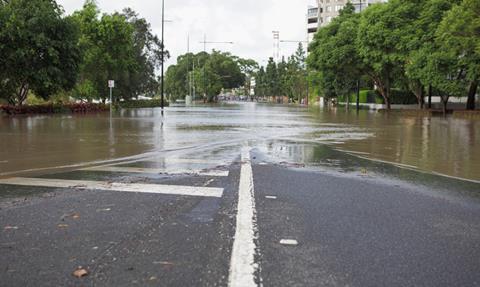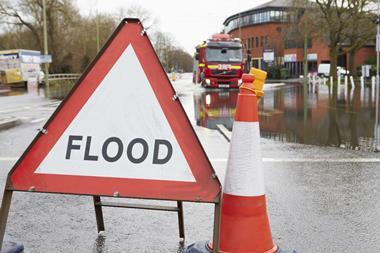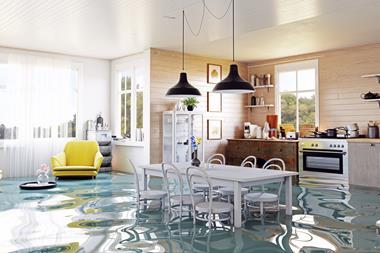Travelers pinpoints six key reasons why property owners insurance is on the up
The pace of change in the modern world is akin to everybody’s favourite rollercoaster, hurtling forward with an unstoppable and unfathomable momentum.
And, although change is largely considered to be a good thing, some updates to our modern way of life should be better considered if the industry wants to cap spiralling property owners insurance costs, says business insurer Travelers.
Its November 2019 white paper, From water claims to climate change: Why property owners insurance claims costs are rising, outlined an initially bleak picture across property damage, business interruption, property owners liability and employers’ liability insurances; the report stated that costs across these business lines have increased significantly over the past 20 years, although corresponding insurance rates and deductibles have remained static, and that frequency of losses is also on the rise.
Furthermore, some insureds are not maintaining up to date building sums, which can cause an under-insurance gap with regards to properties.
Blaming the weather?
Within its report, Travelers identified six central reasons that are contributing to escalating costs in the property owners insurance space. Number one on the insurers list is extreme weather situations, caused by climate change. This could include, for example, storms, high winds and flooding.
Supporting research conducted by the ABI in 2018 found that the ‘Beast from the East’ cost insurers £194m to deal with burst pipes, while the summer heatwave that same year led to £64m worth of subsidence claims.
These weather fluctuations, according to Travelers, means that properties are being subjected to more severe weather conditions on a more regular basis; this in turn leads to increased claims, even for buildings not situated on a known flood plain.
Antonio Huertas, chairman and chief executive at global insurance organisation MAPFRE, emphasised how serious climate change is for the insurance sector during a presentation in Madrid earlier this month.
He said: “Climate change is real, and it is having an increasing impact on people’s lives. The challenge we face is so great that a combined approach is needed to address it: national and regional governments, international organisations, the private sector, academia and civil society.
“This is something that must be addressed; it is crucial for governments to better recognise the role and benefits of insurance as an efficient tool to protect and compensate for this type of catastrophic risk.
“Climate risk coverage helps people affected by extreme climate events to reduce their vulnerability and better manage their resources.”
Frankie Parle, branch manager at Travelers Europe, concurred that, for her, extreme weather is the greatest risk factor.
She said: ”More frequent severe weather events, such as storms and flooding, affects all customers irrespective of trade, size or location. As an insurer, we feel the risk is increasing and are fairly certain that claims frequency or costs may increase.
”The risks arising from climate change will undoubtedly inform the way that insurers think about risk and also about how we partner with brokers to support customers in managing exposure to weather risks.”
Building blocks
Travelers’s report also took to task modern construction processes and supplies as risk factors. For example, lightweight materials such as timber or metal frames, composite panels and plasterboard may be cheaper than traditional brick or stone, but they can create greater fire risks.
This also includes internal and external cladding used to make buildings more energy efficient – not only are these often combustible, but they are also susceptible to water damage.
More plumbing in households can also be linked to increased risk factors; more complex plumbing systems will have increased pressure points for failure, which can be concealed. Furthermore, high-rise residential homes mean that if a water leak does occur, numerous floors could be affected by the resulting damage. Plastic fittings are also more prone to failure than traditional copper piping.
Water and fire
Escape of water was also highlighted as a key area of concern; figures released by the ABI in 2017, for example, showed that the average cost of these claims rose by 31% in the three years prior to 2017. In 2016, the total cost of residential escape of water claims amounted to £654m.
On the other side of the coin is fire claims; the ABI reported that insurers paid £1.3bn for fire claims in 2018, making it one of the most expensive property risks. As well as lightweight materials being more combustible, larger, open-plan spaces in industrial buildings do not contain a fire once it starts – this can lead to more widespread damage.
The Fire Brigade has also changed its approach to firefighting, noted Travelers. If a building has been safely evacuated, firefighters will not risk their own lives to combat the fire. This naturally causes more property damage.
If a property has to be rebuilt, this too can influence creeping costs thanks to a demand for building materials, higher wages for construction staff and a potential Brexit-related labour shortage.
These cost contributors do not always align with inflation – in turn, this can lead to under-insurance. Travelers used the example of an insured’s listed building being insured at 60% less than the building’s valuation.
The Royal Institution of Chartered Surveyors, quoted by Travelers, found that building costs in the UK increased by 13.5% over the past five years, and by 27.5% over the last decade.
Compensation costs
Although the whiplash reform has placed personal injury claims front and centre in terms of the motor insurance sector, compensation for personal injury can also affect property cover. This is mainly down to the discount rate, which currently stands at -0.25% in England and Wales and at -0.75% in Scotland.
Travelers noted that although this reflects diminishing investment returns, insurers are, however, paying higher levels of compensation.
Taking action
So, what does Travelers recommend? The insurer promoted a proactive approach in its white paper, advising property owners to ensure contractors follow safety precautions, especially when performing hot work such as welding, conduct regular preventative maintenance checks, keep guttering and valley roofing drainage clear and sign up for local flood alerts. The firm also suggested that a plumber check a property’s pipes regularly, that a leak device is installed and that precautions should be taken when a property is unoccupied, for example turning off the mains services.
Tenants, on the other hand, can keep their heating on for a portion of the day in cold weather, to avoid pipes freezing, and keep external storage of combustible goods to a minimum. They should also be aware of where the stopcock is and how to turn this off in case of an emergency.
For Parle, data is key in being proactive - both in terms of minimising property risks and reducing costs.
”Insurers can provide information about which measures might have the greatest positive impact on individual risks,” she explained. ”This can help a customer prioritise the preventive actions they might consider taking. Some measures, like regularly checking for leaks, are cost-free. Others, such as preventive maintenance, may be more expensive, but acting in this way can mean reducing the effect of losses or avoiding them altogether. This can not only help prevent the difficulties involved in a loss, but also the business disruption that can come along with it.
”For us, one of the biggest things is around sharing information: we will always partner with brokers to help provide customers with information about the actions they can take to reduce risks. By encouraging people to take advantage of the information provided by insurers, from signing up for flood alerts to checking pipes regularly, customers can often prevent risks happening in the first place.”
Subscribers read more
What lessons are to be learnt for extreme weather claims following Whaley Bridge?

Hosted by comedian and actor Tom Allen, 34 Gold, 23 Silver and 22 Bronze awards were handed out across an amazing 34 categories recognising brilliance and innovation right across the breadth of UK general insurance.





















































No comments yet